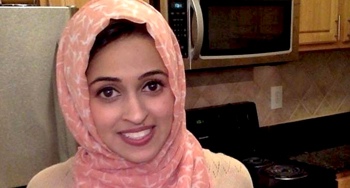Washington, Nov 13: A 24-year-old Muslim school teacher in the US was told to hang herself with her headscarf in a handwritten anonymous note which said the scarf "isn't allowed anymore".
 Mairah Teli, a teacher at Dacula High School in Gwinnett County, located outside Atlanta in Georgia, posted a picture of the note on her Facebook page last week.
Mairah Teli, a teacher at Dacula High School in Gwinnett County, located outside Atlanta in Georgia, posted a picture of the note on her Facebook page last week.
"Mrs Teli, your head scarf isn't allowed anymore. Why don't you tie it around your neck and hang yourself with it," the note scribbled in black ink said, signed "America!", the The Atlanta Journal-Constitution reported.
"As a Muslim, I wear a headscarf as a practice of my faith. I want to share this to raise awareness about the reality and climate of our community. Spreading hate isn't going to "make America great again," she wrote on her Facebook page.
Sloan Roach, a spokeswoman for the Gwinnett County Schools, said in a statement that school officials are working to find out who wrote the note.
"We take a threat against a staff member a serious matter," Roach said.
Teli said the administration and fellow teachers were very supportive after she informed them she found the note.
It is unclear at this time whether the person who wrote it was inspired by Donald Trump's election to the presidency, but Teli's post on Facebook assumed as much.
"I feel children feel safe making comments that are racist or sexist because of him," she said.
Teli said she was shocked and disturbed but worked to be measured when she addressed class. She told the students she was happy to speak with them if there were questions about her hijab.
The incident comes amid reports from around the country about hate rising after Donald Trump's victory in the US presidential polls
I'm a high school teacher and sadly this anonymous note was put in my classroom today. As a Muslim, I wear a headscarf...
Posted by Mairah Teli on Friday, November 11, 2016





Comments
Add new comment